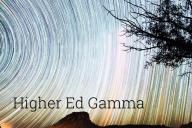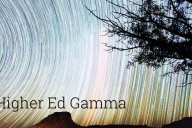You have /5 articles left.
Sign up for a free account or log in.
More humanists should take folktales and fairy tales seriously, because these stories provide unique windows into culture, ethics, human nature and metaphysics.
While these tales might seem like quaint relics of childhood, filled with enchanted forests, magical beings and far-fetched adventures, beneath their fantastical exteriors, these stories contain profound insights into the human condition that are rich in cultural, psychological and philosophical meaning.
That’s the message that a succession of scholars—including Bruno Bettelheim, Ruth Bottigheimer, Joseph Campbell, Alan Dundes, Carl Jung, Claude Levi-Strauss, Max Lüthi, Vladimir Propp, Marina Warner, Jack Zipes and, most recently, Abigail Tulenko—have tried to convey.
These tales persist across centuries and cultures not merely because of their entertainment value, but because they tap into something universal—deep fears, desires and fantasies, profound philosophical questions, developmental issues, and moral dilemmas we all face. From teaching us how to navigate life’s uncertainties to confronting the complexities of good and evil, these tales are far more than simple fantasies.
For humanities scholars, folk and fairy tales offer a reservoir of cultural, psychological and philosophical insights. Anything but insignificant, these tales challenge us to rethink what it means to be human and why stories have such enduring power in shaping our collective consciousness.
Far more than fantastical stories, folktales and fairy tales offer windows into human psychology, human development and human nature and into fundamental ethical, epistemological and metaphysical questions. These tales deliver profound lessons involving identity, ethics and the nature of reality, while serving as vehicles for discovery, growth and coping for generations of children.
Their appeal lies, in part, in their ability to translate complex ethical and metaphysical concepts into accessible narratives, making them enduring sources of moral, psychological and philosophical reflection across cultures and time.
These tales’ simplicity belies their complexity. Beneath the surface of enchanted forests, magical creatures and heroic quests lie profound insights into human nature, ethical choices and the nature of good and evil.
These stories resonate because they reflect our innermost struggles—whether it’s grappling with identity, power, authority, justice or the search for meaning in a chaotic world. Moreover, the flexible oral tradition of folktales means they evolve with each telling, adapting to the needs and values of each new audience, making them enduringly relevant.
In German, folktales are called Wundermärchen—wonder tales. To call folktales Wundermärchen is to recognize their capacity not only to enchant but to provoke deeper reflection on human nature, psychology and ethics. These tales are more than sources of delight—they serve as vehicles for exploring fundamental aspects of the human condition. The “wonder” in wonder tales refers not just to the magic and fantasy within the stories but to the sense of awe and curiosity they inspire about life’s greatest mysteries.
By engaging with fantastical elements, these stories open a space where we can confront our fears, desires and moral dilemmas in ways that might be less accessible in everyday life.
Wonder tales explore human development by addressing themes of development, maturation and the challenges of coming of age and navigating life’s trials. Characters in these tales often undergo profound transformations—whether through literal metamorphosis or metaphorical journeys—that mirror the stages of personal growth and psychological development. In doing so, they offer insights into human resilience, the process of self-discovery and the struggle between innocence and experience.
Furthermore, wonder tales grapple with philosophical and ethical questions. Through their depictions of good and evil, justice and injustice, heroism and cowardice, these stories invite us to examine moral choices in a heightened, symbolic realm. The simplicity of a fairy tale’s structure allows for profound ethical dilemmas to be presented in a distilled form, prompting listeners or readers to consider questions about right and wrong, duty and personal responsibility in ways that resonate on a universal level.
Thus, wonder tales are not just about marvels and magic; they are a unique form of storytelling that uses wonder as a lens through which we can examine the deeper aspects of being human.
A series of scholars has collectively demonstrated the richness of fairy tales and folktales as tools for understanding human culture, psychology and society. They reveal how these stories serve multiple functions: They entertain, educate, moralize and subvert.
These scholars show that shows that fairy tales are not only valuable for children’s development but also for their broader cultural significance. Their works encourage us to take fairy tales seriously—not just as simple moral fables, but as complex cultural texts that offer deep insights into the human condition, both historically and in the present. They push us to think beyond the surface of these stories, exploring their capacity to reflect and reshape cultural norms, moral values and social power.
While these scholars bring different lenses to the study of fairy tales, several key themes emerge across their work.
For example, they show that fairy tales offer valuable insights into the cultures that produce them. They reflect social norms, values and anxieties while also providing space for critique and resistance. These stories can both reinforce and challenge dominant ideologies.
These tales also speak to various aspects of human psychology and development, including maturation, individuation and coming of age. They serve as a psychological tool for individuals, particularly children, to explore and make sense of their inner worlds.
Another theme that runs through these studies involves folktales’ adaptation and evolution. These tales are not static. They evolve over time, adapting to new cultural and historical contexts. This adaptability allows them to remain relevant, as they can be reinterpreted to address contemporary concerns and challenges.
The scholarship shows that while fairy tales are deeply embedded in structures of power, they also offer avenues for resistance. By retelling and reinterpreting these stories, marginalized voices can challenge traditional narratives and imagine new possibilities for social change.
Major interpreters of fairy tales and folktales have approached these stories from various angles and push us to think beyond the surface of these stories, exploring their capacity to reflect and reshape cultural norms, moral values and social power. Here are some of the most notable figures in the study of these tales.
Bruno Bettelheim, in The Uses of Enchantment (1976), argued that fairy tales play a vital role in children’s psychological development by helping them navigate difficult emotions and conflicts such as fear, jealousy and sibling rivalry. Reflecting arguments that had been made by the psychiatrist Julius E. Heuscher, he suggests that fairy tales allow children to confront unconscious desires and fears in a symbolic and safe way. By externalizing inner conflicts through archetypal figures like wicked stepmothers or heroic princes, these tales provide children with a means of processing their emotions. In addition, Bettelheim claims that fairy tales offer moral and psychological lessons, teaching resilience and the belief that good can ultimately triumph over evil.
Ruth Bottigheimer has argued that these stories reflect underlying class tensions. Often focusing on issues of poverty, wealth and upward mobility, these tales reflect the desires of lower-class listeners. Bottigheimer also suggests that many fairy tales were influenced or created by literary sources, challenging the traditional view of their purely oral origins.
Alan Dundes applied Freudian psychoanalysis to folktales, interpreting recurring themes like parental conflict and sibling rivalry as symbolic of unconscious desires, particularly in relation to sexuality and family dynamics. He viewed fairy tales as cultural documents that reveal the collective psychological concerns of a particular society and era.
Carl Jung and Joseph Campbell viewed folk and fairy tales through the lens of archetypes and the collective unconscious. Jung argues that recurring figures such as the hero or wise old man in fairy tales represent universal aspects of the human psyche, helping individuals understand their inner selves. Campbell, in The Hero With a Thousand Faces (1949), expands on this by identifying the “monomyth” or “hero’s journey,” a universal narrative structure that symbolizes personal growth and transformation across cultures.
Claude Lévi-Strauss argued that these stories reflect the binary oppositions that structure human thought, such as nature versus culture or good versus evil. Lévi-Strauss believed that folktales provide insight into universal cognitive structures, revealing how different cultures navigate fundamental dilemmas like order versus chaos through narrative.
Max Lüthi focused on the aesthetic and formal qualities of fairy tales, stressing their simplicity and abstraction, arguing that the “one-dimensional” world of fairy tales, where the ordinary and supernatural coexist without question, makes them powerful. Lüthi emphasizes that the abstract nature of characters allows readers to project their own desires and fears onto the stories, making them universally applicable to human experiences.
Vladimir Propp, in his 1928 study Morphology of the Folktale, adopted a structuralist approach, identifying 31 narrative functions in Russian folktales that follow a predictable pattern, such as “departure,” “struggle” and “return.” Propp argues that folktales, regardless of cultural origin, share a universal structural core that reveals common human storytelling patterns, particularly regarding heroism, danger and resolution.
Maria Tatar views fairy tales as tools for processing complex emotions like fear, anxiety and anger and such difficult topics such as abandonment and death. She has also shown how fairy tales reflect the gender roles and family structures of their times, both reinforcing and challenging prevailing societal norms. In contrast to interpretations that view fairy tales as offering simple moral lessons, she argues that these stories contain ambiguous messages about justice, good and evil.
Marina Warner has been interested in how these tales reflect and challenge gender norms. She has argued that women, both as tellers and subjects, have used these stories to express their experiences of oppression and agency. Warner also views fairy tales as modern myths that help societies understand transformation, desire and fear, connecting them to classical myths and showing how they help construct national identities and navigate societal anxieties.
Jack Zipes, known for his Marxist and critical theory approach to fairy tales, explores how these stories have been used as instruments of socialization, reinforcing social norms through depictions of gender roles, authority and class. However, Zipes also sees their subversive potential, showing how modern adaptations, like feminist retellings, challenge dominant cultural narratives, even as commercial adaptations sanitized these tales, stripping them of their original radical edge.
In a recent essay entitled “Folklore Is Philosophy,” Abigail Tulenko argues that folktales and fairy tales can serve as a valuable vehicle for exploring philosophical questions, while expanding the canon beyond traditional Western, male-dominated texts. Folktales, as culturally embedded, orally transmitted stories, push the boundaries of philosophical inquiry by engaging with complex human concerns in a more accessible and emotionally resonant form.
The author contends that the analysis of folklore offers an alternative approach to philosophy—one that embraces ambiguity, wonder and collective storytelling, providing a broader, more inclusive way of addressing fundamental questions about reality, morality, identity and the human condition.
Both folklore and philosophy, she argues, share the same goal of exploring universal human ethical, epistemological and metaphysical questions. Folktales, for example, often explore moral dilemmas, addressing the nature of justice, right and wrong and moral ambiguity. They also offer fresh perspectives on epistemology by confronting dilemmas about identity, the self and the limits of knowledge.
Metaphysical issues—questions about existence, free will and the nature of good and evil—are also embedded in folktales. These stories frequently probe themes of fate, choice and the consequences of seeking hidden knowledge, reflecting larger concerns about the human condition.
Tulenko further argues that folklore challenges philosophy’s Eurocentric, patriarchal and individualistic tendencies. Found in cultures in all times and places and often told by women and passed down orally through generations, folktales reflect the voices of underrepresented groups. By embracing folklore as part of the philosophical canon, Tulenko believes philosophy can reinvigorate itself by broadening its scope and methods.
In addition, she suggests that analyzing folktales can expand philosophical methodology by engaging both the rational and emotional dimensions of human understanding. Folklore’s collective ownership and evolving nature also challenge the notion of individual genius that dominates academic philosophy, offering a more communal and dynamic approach to knowledge.
What might be some future directions in the study of folktales and fairy tales, in addition to treating such tales as a form of popular philosophy? Here are some approaches that have already begun to take root.
The rise of the internet and social media have created new avenues for storytelling. Research into how folktales evolve in digital spaces, such as memes, viral videos and fan fiction, can offer insight into modern folklore. Scholars are already exploring how traditional themes and structures adapt to new platforms and how online communities create and share stories in ways that mirror and diverge from traditional oral storytelling.
Increasing interest in environmental issues is also leading to eco-critical interpretations of folktales. Researchers might explore how tales reflect humanity’s relationship with nature, animals and the environment, especially in light of climate change, deforestation and ecological crises.
In addition, there is growing interest in how trauma, collective or personal, is reflected in and processed through folklore. Studying folktales from societies that have experienced war, displacement or systemic violence can provide deeper insight into how narratives help individuals and communities cope with trauma.
Scholars have also begun to reinterpret folktales through a queer theory lens, examining how gender and sexuality are constructed within traditional narratives. This approach could be expanded to explore how tales challenge, subvert or reinforce gender roles, power dynamics and sexual identity.
Far more than amusing or terrifying stories told to entertain children, folktales and fairy tales offer profound windows into the complexities of human nature, psychology and society. These tales hold within them a treasure trove of ethical dilemmas, metaphysical musings and epistemological insights.
They reflect the fears, desires and hopes that have shaped human consciousness for centuries, providing a lens through which we can examine the development of the self, the nature of morality and the search for meaning in a chaotic world.
By exploring these tales’ hidden depths, we gain access not only to the collective wisdom of diverse cultures but also to deeper truths about ourselves. Folktales remind us that the journey to understanding life’s mysteries is as important as the destination and through these wonder tales, we continue to explore what it means to be human.



